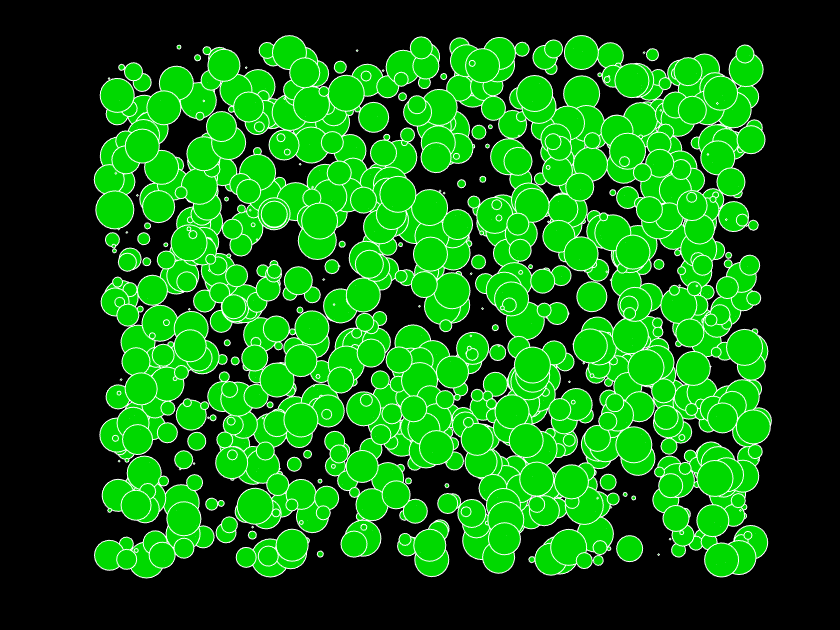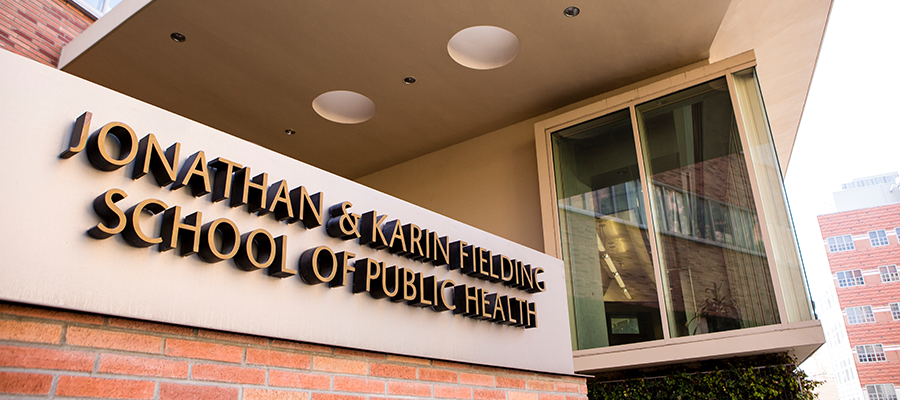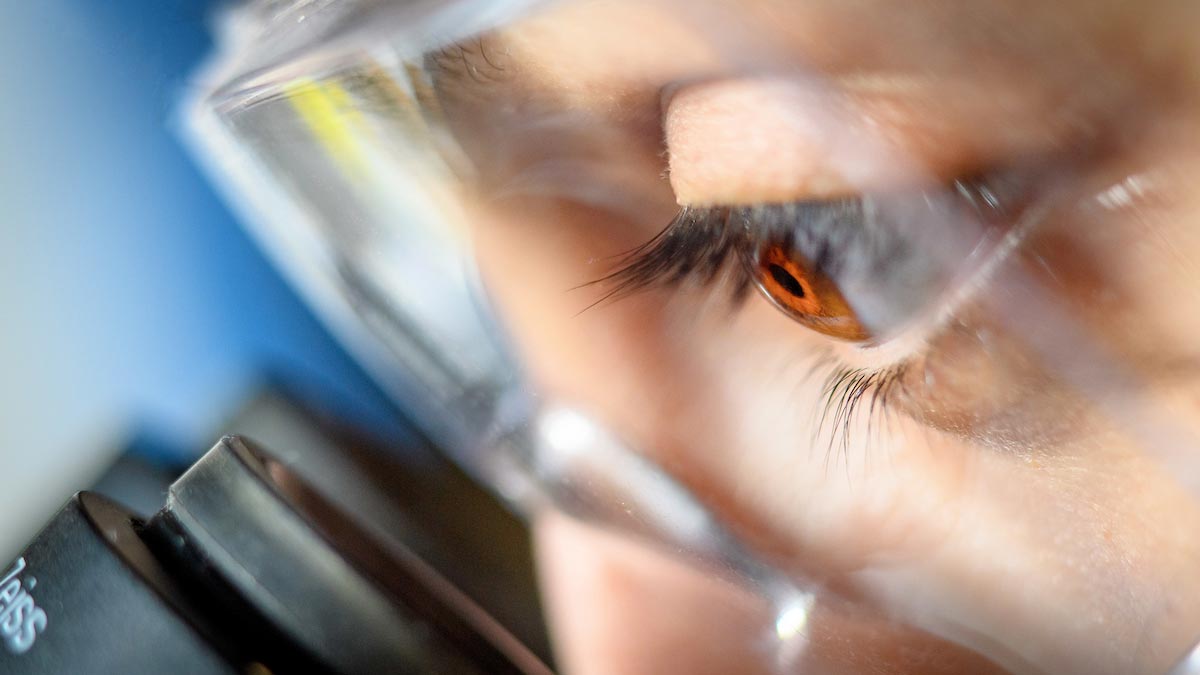In an emotional new series of videos, Black medical professionals plead for viewers to get a COVID-19 vaccine.
Month: August 2021
American College of Surgeons urges surgeons to “Talk It Up” with patients about COVID-19 vaccination
ACS is launching a “Talk It Up” campaign to help surgeons address patient concerns and help them understand the importance of getting vaccinated against COVID-19.
Researchers link neurodegenerative disease protein to defective cholesterol metabolism
Researchers in Singapore have discovered that brain cells cannot maintain the cholesterol-rich myelin sheath that protects and insulates neurons in the absence of a protein called TDP-43. The study, which will be published August 4 in the Journal of Cell Biology (JCB), suggests that restoring cholesterol levels could be a new therapeutic approach for diseases associated with TDP-43, such as amyotrophic lateral sclerosis and frontotemporal dementia.
Built-in vibration control may help soundproof spaces
A different kind of design for absorbing vibrations could help better soundproof walls and make vehicles more streamlined, a new study shows.
TEEN ATHLETES PREPARE FOR FALL SPORTS WITH GOOD NUTRITION, PHYSICAL ACTIVITY: ACADEMY OF NUTRITION AND DIETETICS CELEBRATES KIDS EAT RIGHT MONTH™
The Academy of Nutrition and Dietetics encourages parents and caregivers to guide teens on how to safely resume sports and properly fuel their bodies to continue growing and maturing.
The Monday Campaigns Offers DeStress Monday at School to Reduce Teacher Stress
Studies show most teachers experience high stress levels. The COVID-19 pandemic only exacerbated the problem. Many teachers felt heightened pressure and experienced burnout as they navigated hybrid and remote teaching in the midst of a global pandemic. When teachers go back to the classroom this fall, they will undoubtedly continue to feel stress as they face the uncertainties that lie ahead. To provide teachers with effective tools to relieve stress, The Monday Campaigns, a nonprofit public health initiative, is offering their DeStress Monday at School program free of charge to schools.
Nova Medical Centers Expands into Fifth State with Announcement of Milwaukee Airport Center
Nova Medical Centers, the nation’s leading occupational healthcare provider, announces the opening of its newest location in Milwaukee, Wisconsin.
World-renowned data science experts to discuss the future of digital fairness
ICDS’s two-day Fall Symposium will be held Oct. 6 and 7, bringing together researchers from around the U.S. to discuss data, equity, reproducibility and other topics related to fairness in data science.
Hydrogen Technologies Take Leading Role Toward Net Zero
Achieving Net Zero energy, where the total amount of energy used is equal to the amount of renewable energy created, is closer than ever before, and hydrogen technologies will play an important role in achieving that goal, but needs and gaps need to be addressed before a true hydrogen-powered future can take form. There are many opportunities in the global public and private sectors for research, development, and deployment collaboration.
LUDWIG CANCER RESEARCH WELCOMES MIKAËL PITTET TO LUDWIG LAUSANNE
It is with great pleasure that we announce the appointment of Mikaël Pittet as a full Member of the Lausanne Branch of the Ludwig Institute for Cancer Research.
LEDs Light the Way to Coronavirus Disinfection
LEDs are commonly used for sterilization, and in the continued effort to combat the coronavirus pandemic, LEDs can also help inactivate SARS-CoV-2. A team in Pakistan designed far-ultraviolet LEDs at a targeted wavelength of 222 nanometers, chosen both for its ability to inactivate the virus and for being safe on human skin. They based their design on the material aluminum gallium nitride, part of a set of materials called III-nitrides which are efficient, inexpensive, and environmentally friendly.
Powering Navigational Buoys With Help of Ocean Waves
Traditionally used energy harvesting technologies, like photovoltaic panels or wind turbines, suffer from several limitations. In the absence of daylight and wind, neither of the two can supply any power. In the case of ocean buoys, a potential solution is omnipresent: wave energy. Abundant, predictable, and consistent, the ocean’s waves can be used to power navigation buoys. Researchers have developed sphere-based triboelectric nanogenerators that can be incorporated directly into navigational buoys to provide electricity from ocean waves.
Indoor Lighting Creates Power for Rechargeable Devices, Sensors
As more devices require recharging their batteries, researchers are looking to ambient lighting as a potential source of generating small amounts of power for indoor devices. The researchers used one lighting source, a white LED akin to normal brightness for indoor lights, to test three different modules — a gallium indium phosphide semiconductor, a gallium arsenide semiconductor, and a silicon semiconductor. The light source peaked in intensity on the shorter wavelengths of light.
Batteryless Pacemaker Could Use Heart’s Energy for Power
The cardiac pacemaker of the future could be powered by the heart itself, according to researchers in China. Current cardiac pacemakers use a battery power supply and leads to keep hearts beating regularly. Yi Zhiran and his group are investing batteryless powering and leadless pacing, harvesting kinetic energy from the heart to power the lifesaving device. The energy is harvested by the buckling of the encapsulated structure of the pacemaker, creating buckled piezoelectric energy.
Measuring Photovoltaic Performance Indoors
As photovoltaic technology continues to progress, PV devices’ applications in harvesting energy from indoor ambient light have become more realistic. Some combinations of PV material and light source can be more efficient in converting power than the same material under solar illumination, and a better understanding of these relationships is needed to fully characterize the behavior of solar cells under very low illumination conditions.
UCLA Investigators Approved for Study on Youth Suicide Prevention
A research team from the UCLA Youth Stress and Mood Program at UCLA’s Jane and Terry Semel Institute for Neuroscience and Human Behavior has been approved to lead a $13 million funding award by the Patient-Centered Outcomes Research Institute (PCORI) to compare two evidence-based interventions for reducing suicide attempts and improving patient outcomes for youth presenting to emergency departments.
Text-message ‘nudges’ can encourage holdouts to get COVID vaccination, study finds
New UCLA-led research indicates that simple text messages emphasizing the easy availability of COVID-19 vaccines successfully boosted the number of people who got the shot.
’Til the cows come home
Meat and dairy played a more significant role in human diets in Bronze Age China than previously thought. A new analysis also suggests that farmers and herders tended to sheep and goats differently than they did their cows, unlike in other parts of the world — keeping cows closer to home and feeding them the byproducts of grains that they were growing for their own consumption, like the grass stalks from millet plants.
Large catheters, small veins, increase blood clot risk for cancer patients
A world-first study led by the University of South Australia has found that cancer patients receiving chemotherapy intravenously have more than double the risk of developing a blood clot or thrombosis if the vein is too small and the catheter occupies more than 45 per cent of the vein.
A Call to Rethink Electricity Measurement
PNNL researcher’s proposed overhaul of outdated electricity measurements could mean fewer blackouts, better automation, and more clean energy resources.
The Future of Masking Post-Vaccination
The COVID-19 vaccine is your best defense against the virus, but when and where should you continue to wear a mask? Rush infectious disease expert Michael Lin, MD, answers questions about wearing a mask post-vaccination.
Up in smoke
University of Utah researchers have developed a method to better predict if and when wildfire smoke might affect the ground-level air quality of nearby residents.
COVID-19 infection rate low among rural health care workers
Antibody testing of health care workers in three rural counties in eastern South Dakota and western Minnesota showed 15% had antibodies to the novel coronavirus.
Achilles injuries skyrocket as America returns to normal. Here’s how to handle them
During June of 2021, physicians at Michigan Medicine diagnosed more Achilles ruptures than they did in all of 2020. While there is much to learn about the injury surge, it is important for people to know the signs of Achilles damage and when to seek medical attention, which can make all the difference for recovery.
Measuring nitrogen in green manures
Finding ways to determine nitrogen levels will help breeders help farmers
Flexible, wearable X-ray detector doesn’t require heavy metals
Researchers in ACS’ Nano Letters report a proof-of-concept wearable X-ray detector prepared from nontoxic metal-organic frameworks (MOFs) layered between flexible plastic and gold electrodes for high-sensitivity sensing and imaging.
Research powerhouses join forces to maximise global potential of 6G next generation mobile technology
A pioneering centre is being launched to take mobile technology to the next level and put the UK at the global forefront of 6G research, innovation, and education.
Fine particulate air pollution associated with higher risk of dementia
Using data from two large, long-running study projects in the Puget Sound region — one that began in the late 1970s measuring air pollution and another on risk factors for dementia that began in 1994 — University of Washington researchers identified a link between air pollution and dementia.
Study finds cancer-related follow-up care is underutilized among young adult survivors of childhood cancer
A research team, led by Joel Milam, PhD, professor of epidemiology and biostatistics at the UCI Program in Public Health, is examining gaps and disparities in lifelong follow-up among survivors, including taking a closer look at long term follow-up care plans, specifically for underserved populations. The study shows that age and ethnic background is associated with inadequate follow-up care among young adult childhood cancer survivors.
Minuto de Mayo Clinic: Aterrizar bien después de un salto evita lesiones
Los grandes eventos, como las olimpiadas, inspiran a gente de toda edad a intentar un nuevo deporte o actividad. El Dr. Kelechi Okoroha, cirujano ortopédico de Mayo Clinic, desea que la gente participe en actividades nuevas, pero estando al tanto de algunas lesiones deportivas que ocurren con frecuencia.
HARD-CORE BACTERIA
A new study by UD researcher Julie Maresca and her students found that even in a harsh concrete habitat, bacterial communities can survive, thrive and do what all living things do—change. Bacterial communities within concrete could provide early warning of alkali-silica reactions that degrade concrete but are difficult to detect. Typically, these reactions are only recognized when cracks are forming in the concrete. Bacteria may also have the potential to provide “biorepair” of concrete.
Finding new types of 2D material defects could enable better electronics
The discovery of new types of defects in 2D materials may lead to the creation of new ultra-compact electronic devices.
The Association of American Cancer Institutes to Honor Garber with Distinguished Scientist Award
Judy E. Garber, MD, PhD, FAACR, will receive the AACI Distinguished Scientist Award on Wednesday, October 20, during the 2021 AACI/CCAF Annual Meeting.
Returning to Golf After Total Knee Replacement
Avid golfers who have knee replacement surgery can take comfort that they’ll be able to return to the sport with less pain and fewer limitations on their golf swing, according to a Henry Ford Health System study published in the journal Sports Health: A Multidisciplinary Approach.

Connective issue: AI learns by doing more with less
Research from the lab of Shantanu Chakrabartty reveals constraints can lead to learning in AI systems.
Medical Students Begin Journey to Careers as Physicians During White Coat Ceremony
Students at Rutgers Robert Wood Johnson Medical School begin journey to careers as physicians during white coat ceremony—including first-generation American Hassiet Asberom.
Pfizer, Moderna absent; Cara Therapeutics, Square in as 2020-21 R&D winners
Pharmaceutical and biotechnology companies topped the 2021 RQ Top 50 list of the most innovative U.S. companies. The annual ranking identifies the smartest R&D spenders – those companies that both spend big (at least $100 million in R&D) and provide the greatest returns to shareholders from that investment.
One of World’s Rarest Chameleons Found Clinging to Survival
Urgent conservation measures are needed to save a Critically Endangered species of chameleon which has been found clinging to survival in patches of rainforest in Malawi.

New report: State of the science on western wildfires, forests and climate change
Seeing the urgent need for change, a team of scientists from leading research universities, conservation organizations and government laboratories across the West has produced a synthesis of the scientific literature that clearly lays out the established science and strength of evidence on climate change, wildfire and forest management for seasonally dry forests. The goal is to give land managers and others across the West access to a unified resource that summarizes the best-available science so they can make decisions about how to manage their landscapes.
Study provides first holistic assessment of plastic pollution in the Caribbean
The Caribbean is renowned globally for its stunning beaches and crystal clear ocean.

Stress at Work and at Home Increases Risk of Depression in U.S. Workers
Job strain and family strain are found to be linked to major depressive episodes and may have different effects on men and women, according to a study from UCLA researchers published in the August edition of the Journal of Psychosomatic Research.

Researchers use AI to unlock the secrets of ancient texts
Researchers at University of Notre Dame are developing an artificial neural network to read complex ancient handwriting based on human perception to improve capabilities of deep learning transcription.
‘Virtual nature’ experiences reduce stress in prisons
For people who are in jails or prisons, experiencing nature virtually is usually their only option. A new study from University of Utah researchers finds that exposure to nature imagery or nature sounds decreased physiological signs of stress in the incarcerated, and spurred their interest in learning more about the habitats they experienced. The researchers also found that, in general, people didn’t strongly prefer visual to auditory nature experiences.
The future of personalized medicine is in unlocking the hidden mechanism that controls which genes are activated, researcher says
New research by McMaster University evolutionary biologist Rama Singh suggests there is a layer hidden in our cells that controls how genes interact, and how the many billions of possible combinations produce certain results.
The U.S Department of Energy and the New Jersey Board of Public Utilities Provide Sustainability Planning Resources for Resilient Municipal Microgrids
The New Jersey Institute of Technology’s Center for Resilient Design announces the launch of microgrids.io, a web-based resource focused on planning and developing sustainable, resilient local government microgrids locally and nationally.
Avoiding Drug Resistance by Understanding Evolution of Viruses
During ACA’s 71st annual meeting, Celia Schiffer, from the University of Massachusetts, will talk about her lab’s work with virus substrate recognition as a method to avoid drug resistance. Schiffer and her team expanded their work on HIV and the hepatitis C virus to include human T-cell lymphotropic virus type 1 and SARS-CoV-2, the virus that causes COVID-19, and discovered that designing robust inhibitors to fit within the substrate envelope tips this balance toward decreasing the probability of resistance.
Gaming the Research: Reinforcement Learning Changing Data Evaluation Challenges
Advances in artificial intelligence, specifically reinforcement learning, are proving beneficial to accelerating the pace of data-intensive challenges. The methods used by researchers with RL are techniques often used in video games, and by applying gamification to scientific processes, RL agents can learn as they are used in experiments, in effect, leveling up their rates of discovery as they work. Researchers are using trained RL agents at NSLS-II to accelerate the analysis of data-heavy measurements.
Check your Health: Sun Safety & Learning your ABCDE’s
Rutgers Cancer Institute of New Jersey expert shares how to check for skin cancer.
MRIs on crop roots open new doors for agriculture
A team of scientists led by Texas A&M AgriLife is taking a page from the medical imaging world and using MRI to examine crop roots in a quest to develop crops with stronger and deeper root systems.
David Chavez selected Fellow of the American Chemical Society
David Chavez, deputy group leader of the High Explosives Science and Technology group at Los Alamos National Laboratory, has been selected as a member of the 2021 class of Fellows of the American Chemical Society (ACS).